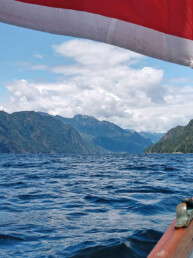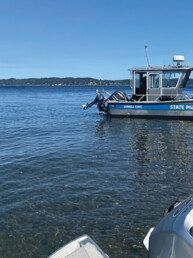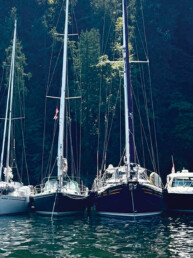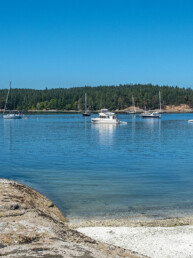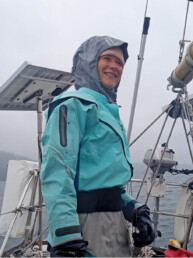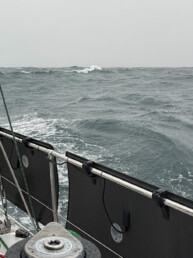I recently received an email with a host of questions about outfitting a boat for offshore sailing and my opinions on a wide variety of related topics. While I’m mostly reluctant to give hard-and-fast “this is what you should do or have” type answers, the last question on the list piqued my interest because it didn’t ask whether something was needed or not (which isn’t at all for me to decide). It simply asked what my practical knowledge was.
The question: “What is your experience with AIS systems?”

The reason the query drew my attention is because it immediately brought to mind several poignant experiences I’ve had with AIS (Automatic Identification System) aboard. While I’m certainly not the tech guru or authority on AIS systems, I do have a large number of sea stories to share about using the system and what I’ve found to be the benefits associated with it. Off the top of my head popped multiple experiences I’ve had using AIS just in the past year or two alone. Here is one from a delivery Jill and I did.
Collision Course in the North Atlantic
It’s the middle of the night in the stormy North Atlantic Ocean. Scanning the horizon, all I see is black — probably the darkest night I’ve experienced at sea. Wind howls from the northeast at 30 to 33 knots, gusting to 40. Rain is pouring down in sheets. Wave heights — at their smallest — are in the low teens. Some of the waves seem monstrous, others are breaking on our stern and we’re sailing the well-suited Garcia Exploration 45 at a “conservative” 9 to 11 knots with surfs up to 15. Woohoo!
When Jill relieves me from watch, I show her a commercial fishing trawler on AIS running at a similar speed a little over 2 miles off our port side. Though we can barely make it out on the horizon, we know it’s there. In the moment, we seem to be parallel to one another and staying clear, but are actually angling towards a collision course. I express to Jill that my hope is for the vessel to alter course just enough to pass behind us, and we talk about our options before I hit my bunk for some much needed sleep.
There were a couple problems that we identified during our brief chat. First and foremost was that the seas were so large and rain so heavy that, even though the trawler was relatively close, it was nearly impossible to keep a visual on. Its running lights were virtually useless, making AIS and radar key assets.
The second problem was that we were sailing on a deep broad reach with a triple reefed mainsail on a preventer. In order to avoid a collision, if one became imminent, we’d have to jibe. Rounding up in these seas is not an option. And the issue with jibing is that the maneuver will take a long time to execute and, in the conditions given, would have been hazardous to the boat and us. Plus, we would then need to jibe back onto our original course once we cleared the trawler. Basically, we are pinned down and virtually blind — save for the AIS and radar.
With the AIS, we know the vessel’s name, course and speed, among other things, and are constantly monitoring its movements relative to ours. Plus, it has the same information about us. In a sort of a dazed half state of sleep from my bunk, I eventually hear Jill call the trawler by name on the radio, briefly explain our situation and arrange for it to pass behind us. Easy as that. I fell asleep.
After the situation was resolved, and many times since, I was extremely glad to have had the benefit of AIS. Yes, without it there is a chance we still would have seen the fishing boat. But in my estimation, there is also a good chance that we wouldn’t have. And the fact that we could both “see” each other and knew, at the very least, boatspeed, course and range, meant that we could monitor the situation accurately and then make a call to avoid colliding or having to do a difficult course change hundreds of miles offshore in a fall gale.
AIS for the win!
This same scenario actually occurred numerous other times on that delivery in similar conditions.
Andy Cross
Andy Cross is the editor of 48° North. After years cruising the Pacific Northwest and Alaska with his family aboard their Grand Soleil 39, Yahtzee, they sailed south and are currently in the Caribbean Sea. You can follow their adventures at SailingYahtzee.com.

